It’s so easy to fall into the rabbit hole of fast fashion and keep adding the latest trends to your wardrobe. However, all the rave about fast fashion poses more harm than good to the environment and even the manufacturing process.
Environmental concerns have come to the limelight. There are conversations about sustainable alternatives to fast fashion without sacrificing style. One of the best solutions for that is building an eco-friendly wardrobe.
The underlying idea of an eco-friendly wardrobe focuses on environmental sustainability. Thus, creating a wardrobe filled with responsibly sourced materials can reduce your carbon footprint, positively impacting the planet.
But here’s the problem: how do you create a sustainable wardrobe from scratch? We get it; doing away with your usual brand and limiting your choices may be difficult.
Here are some tips for curating an environmentally-friendly wardrobe without losing style.
Quality Over Quantity
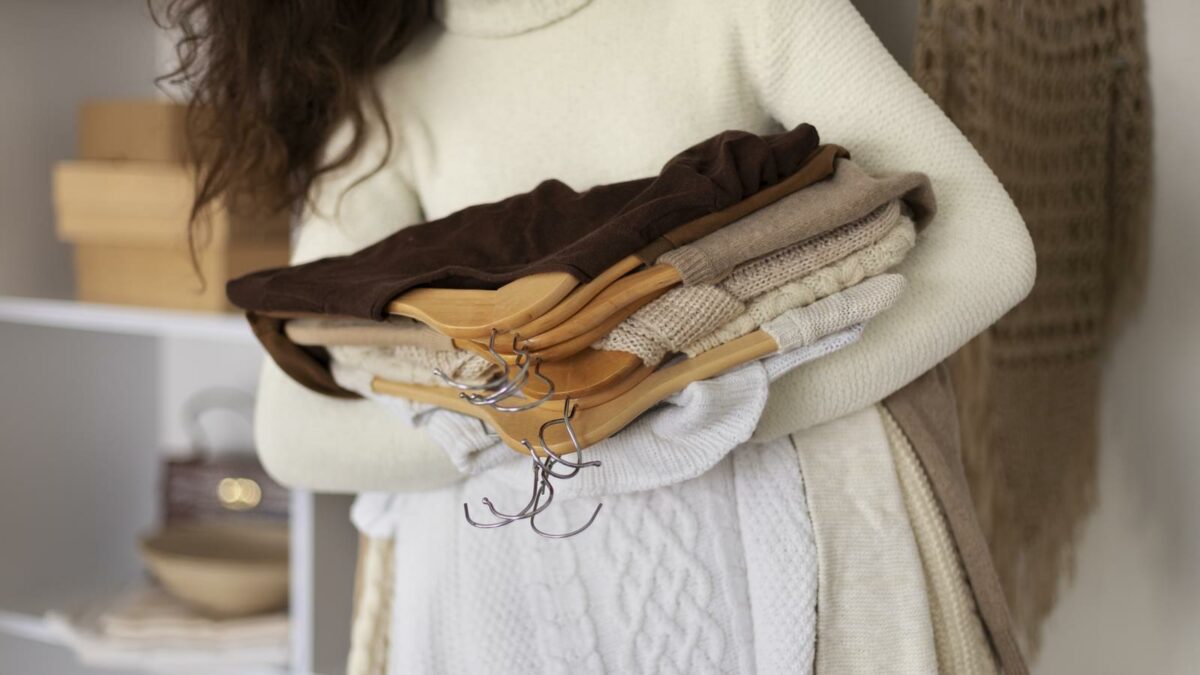
The first step towards building an eco-friendly wardrobe is investing in quality apparel. It is better than going for cheaper options. Fast fashion has imbibed in us always to buy whatever trends. In hindsight, trendy pieces have a huge impact on the environment, as manufacturers will always go into production mode all the time. More often than not, some materials may be illegally or unethically sourced.
The cost of quality clothes is high. Yet, the cheaper alternative will not last half as long as high-quality materials. Quality materials are less likely to wear out after a couple of uses.
Investing in quality clothing means you’re investing in longer shelf life. What’s more? It shows that you support ethical practices and embrace mindful consumption.
Opt for Sustainable Fabrics

Buying sustainable fabrics is vital when building an eco-friendly wardrobe. That’s because they are produced using methods that pose less harm to the plant. For instance, they need less energy, water, and chemicals during cultivation. They also need less water during production compared to typical fabrics.
Opt for fabrics like cotton, linen, and hemp, known for their high biodegradability. Another reason to buy sustainable fabrics is that they have gotten from renewable resources, including recycled materials. Thus, investing in these fabrics will lower the demand for virgin materials. It will also reduce the extraction of limited resources.
Besides, sustainable fabrics also foster fair trade and ethical practices. They are produced by brands that value corporate social responsibility. They also promote safe working conditions and fair wages. So, choosing these fabrics will support the empowerment of workers. It also helps foster a fair fashion industry.
Buy Clothes That Can Be Worn Through All Seasons
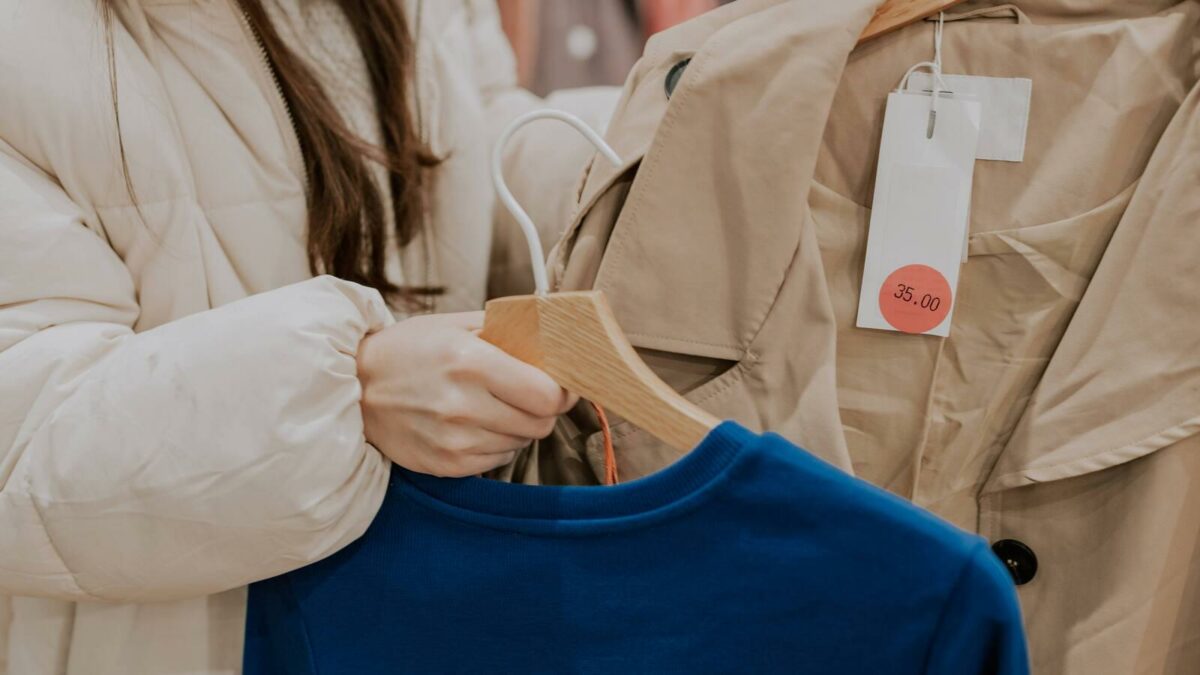
Choosing clothing that can be worn throughout all seasons is recommended.
Think about it. When you buy, all-season wears, you minimize the need to purchase season items every time.
A streamlined wardrobe transcends trends and remains relevant. This is regardless of the time of the year.
Another benefit is that seasonless clothing comes with an extended lifespan. It is better when compared to clothing designed for seasonal wear. You will not be restricting these wears to limited timeframes. Thus, seasonless clothing will never go out of style.
You also get to mix and match different outfits for different weather conditions. And when you consider cost? Investing in seasonless clothing is better than buying separate clothing for each season. It will save you more money and promote mindful consumption as you focus on quality than quantity.
Wear Your Wardrobe
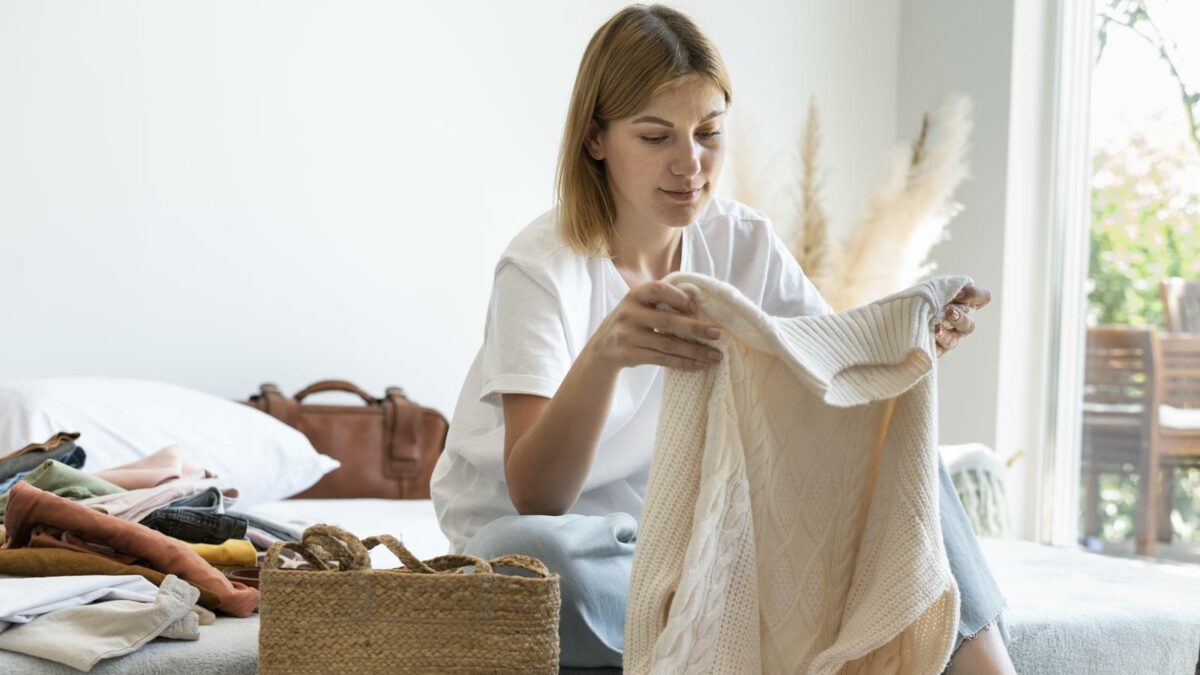
Another essential tip in building a sustainable wardrobe is to wear what’s in your wardrobe. Yes, all of it. Admit it; you have a pile of clothes at the bottom or back of your closet that you haven’t worn in a long time.
In fact, according to WSJ, only 20% of our wardrobe is worn regularly. So, before restocking your wardrobe, dig around your pile of unworn clothes for your next outing.
There will always be an outfit that will suit any occasion there. However, if you think you’d never wear them again, you can pass them to someone else, donate them to charity, or sell them off on auction websites.
Learn to Repair Your Own Clothes

Learning how to repair your clothes is vital to building an eco-friendly wardrobe. When you know how to repair your clothes, you can fix minor wear and tear instead of completely discarding them.
Repairing increases the lifestyle of your garments, lowering the need for replacements. The fashion industry is dealing with a lot of textile waste. An estimated 92 million tons of textile waste is produced annually – some deposited in landfills. Learning basic sewing and knitting skills or giving your clothes to a tailor can significantly reduce that waste.
Another benefit to repairing your clothes is that you can get creative and personalize your wardrobe. You can add unique embroidery, patches, and other add-ons to refresh your old clothing.
Try Thrift Shopping
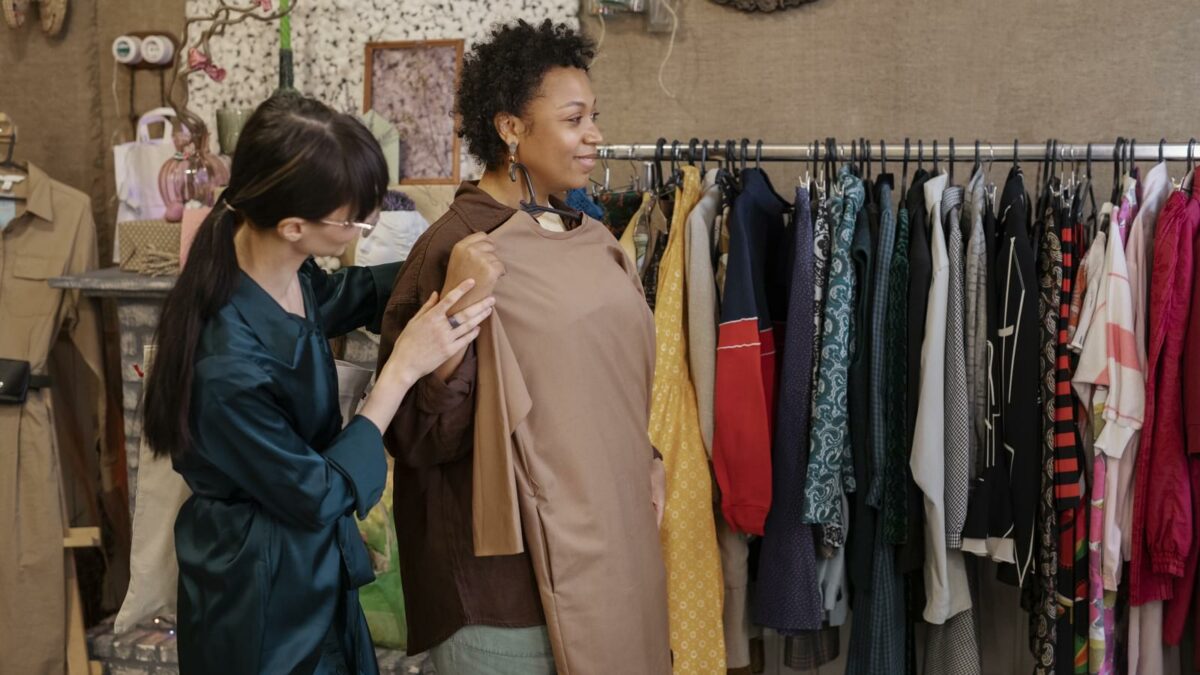
You may not like the idea of thrift shopping for second-hand clothes, but it is another essential aspect of building an eco-friendly wardrobe. Thrift shopping allows you to breathe life into high-quality clothing that would otherwise end up in a landfill.
However, the most reason to try thrift shopping is that it presents an opportunity to see a treasure trove of vintage and timeless fashion pieces. These pieces may be unavailable in retail shops or too expensive to purchase.
Thus, it allows you to discover and buy high-quality, vintage clothing at a fraction of its original price.
Take Care of Your Existing Clothes
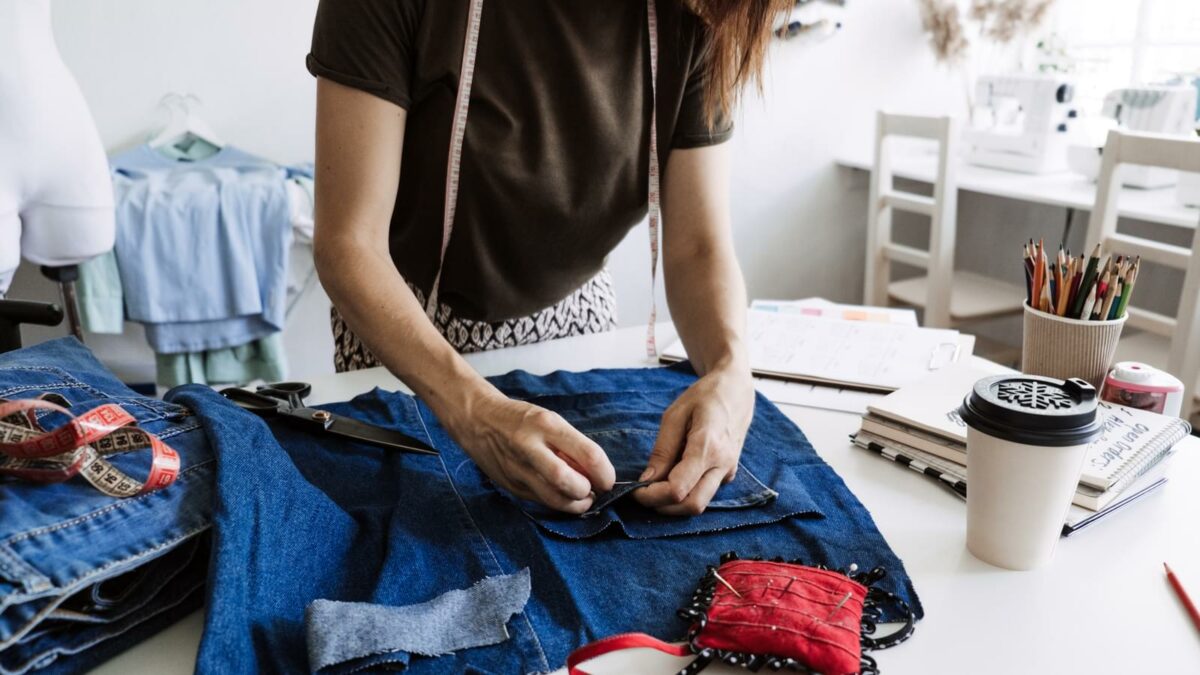
Taking care of your existing clothes is another aspect of building a sustainable wardrobe. Effective care helps your clothes last for a long time, reducing the need for replacement and minimizing textile waste.
It also reduces the environmental impact of manufacturing, transportation, and disposal. Adequately rotating and mixing your outfits will reduce the wear and tear across your wardrobe. It also prevents the overuse of specific clothing and extends their lifespan.
Take note of the detergents used in washing your clothes, as some may contain harmful chemicals that will harm aquatic life when washed down the drain.
You should also opt for a steamer – either a standing or handheld one. Steamers leave your clothes fresh, wrinkle-free, and smooth. Steamers also kill bacteria and eliminate bad smells from clothes, perfect for prolonging their lifespan.
Adjust How You Splurge on Clothes

We get it; a new dress caught your attention while visiting a fashion shop, and you want to get it – even if you break the bank for it. However, spending much on dresses or accessories you only get to wear on special occasions is a tad wasteful.
Instead, invest in clothes you would wear every day. The fact is, trends come and go, often leading to consumption waste. Choosing versatile, classic pieces will create a relevant wardrobe that stands the test of time.
Thus, when allocating your budget for shopping, consider sustainability and invest in high-quality, eco-friendly pieces that align with your goals.
Conclusion

Building an eco-friendly wardrobe that doesn’t sacrifice style requires making informed decisions and lifestyle adjustments. Adopting the above tips will create a sustainable and ethical wardrobe.
What’s more? Embracing these practices benefits the environment by reducing textile waste resource consumption. It will also promote a mindful and responsible approach to fashion. Together, we can create a fashion industry that values sustainability, longevity, and style.
